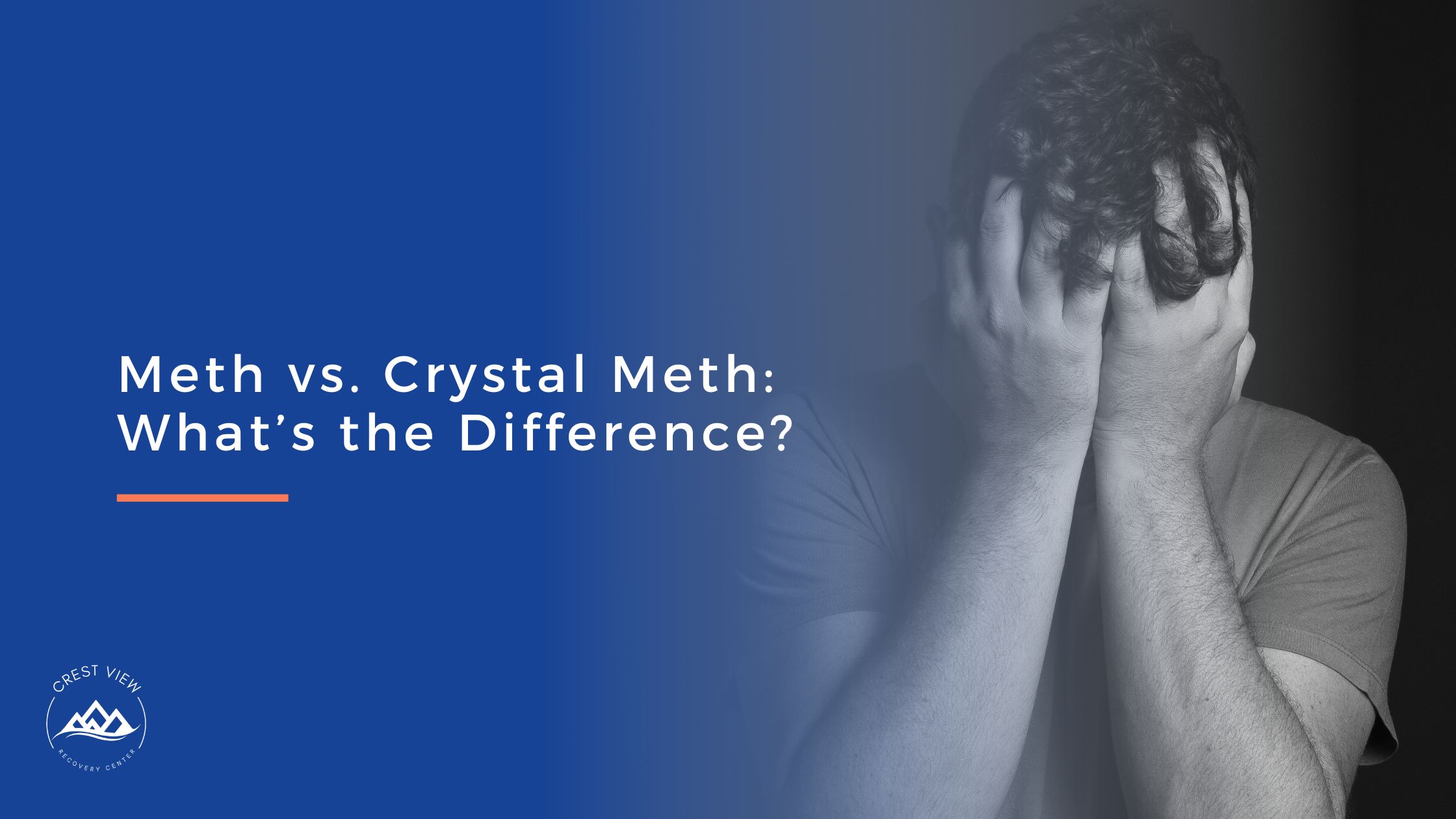Understanding the differences between meth vs. crystal meth is crucial for anyone seeking a deeper understanding of methamphetamine abuse. Although these terms are often used interchangeably, they refer to different forms of the same drug, each with unique characteristics and impacts on health. Meth is highly addictive and can lead to severe mental health issues such as paranoia, hallucinations, and violent behavior. Long-term use also causes significant physical health problems, including severe dental decay, skin sores, and an increased risk of infectious diseases.
If you or someone you love needs meth addiction treatment in Asheville, North Carolina, contact Crest View Recovery Center at 866.327.2505.
What Is Meth?
Methamphetamine, commonly known as meth, is a highly addictive stimulant that affects the central nervous system. It comes in several forms and can be consumed in various ways, each contributing to its potent effects and potential for abuse.
Methamphetamine is a synthetic drug with powerful stimulant properties. It’s chemically similar to amphetamine, a compound found in medications used to treat ADHD and narcolepsy. Meth typically appears as a white, odorless, bitter-tasting crystalline powder that easily dissolves in water or alcohol.
Common Forms
Meth can be found in several forms, including powder, pills, and chunky crystals resembling glass fragments. Street names for meth include “speed,” “chalk,” and “crank.” Users can ingest the drug through snorting, swallowing, injecting, or smoking, with each method leading to a rapid and intense high followed by devastating physical and mental effects.
What Is Crystal Meth?
Crystal methamphetamine, or crystal meth, is a specific form of meth characterized by its clear, crystalline appearance. It’s also known as “ice” or “glass” due to its transparent, glass-like texture. Crystal meth is usually smoked, although it can also be injected or snorted.
Unique Characteristics
Crystal meth is significantly more potent than regular meth. Its crystalline structure makes it ideal for smoking, which delivers a quick and intensely euphoric high. This increased potency and rapid onset make crystal meth exceptionally addictive and dangerous.
Key Differences Between Meth and Crystal Meth
When it comes to crystal meth vs. meth, there are some critical differences. The following are a few notable ways in which these two substances differ:
Chemical Structure
Both meth and crystal meth share the same active ingredient, methamphetamine hydrochloride. However, crystal meth is a purer form, resulting in higher potency and increased risk of addiction and adverse health effects.
Methods of Use
Meth is often snorted, swallowed, or injected. Each route affects how quickly the drug’s effects are felt. Crystal Meth is primarily smoked or injected, leading to faster and more intense highs. Smoking crystal meth is particularly harmful as it rapidly delivers the drug to the brain.
Potency and Effects
Crystal meth’s higher potency results in more intense euphoria and a greater likelihood of addiction. While both forms of meth can cause severe short- and long-term effects, the heightened strength of crystal meth amplifies these risks.
Risks and Health Impacts
Both meth and crystal meth can cause:
- Increased wakefulness and energy
- Decreased appetite
- Rapid and irregular heartbeat
- Hyperthermia (elevated body temperature)
Chronic use can lead to severe health problems, including:
- Extreme weight loss
- Dental issues (“meth mouth”)
- Skin sores from excessive scratching
- Anxiety, confusion, and violent behavior
- Hallucinations and paranoia
- Severe brain damage affecting memory and cognitive function
The addictive nature of meth and crystal meth is linked to their ability to increase dopamine levels in the brain, creating intense feelings of pleasure. Over time, users develop tolerance, needing higher doses to achieve the same effect, which can lead to a dangerous cycle of dependency.
Treatment Options for Methamphetamine Abuse
Effective treatment for methamphetamine addiction involves a comprehensive approach, including:
- Detoxification – Medical supervision to manage withdrawal symptoms
- Behavioral therapy – Cognitive-behavioral therapy (CBT) and contingency management interventions
- Support groups – Programs like Narcotics Anonymous (NA) for peer support
- Rehabilitation programs – Outpatient programs with structured treatment plans tailored to individual needs
Understanding the differences between meth and crystal meth is essential in recognizing the unique challenges each substance presents. Both forms of methamphetamine pose significant health risks and require specialized treatment to overcome addiction. If you or someone you know is struggling with methamphetamine abuse, professional help is available.
Contact Crest View Recovery Center Today for Meth Addiction Treatment
For expert guidance and effective treatment options, contact Crest View Recovery Center today. Our dedicated team is committed to helping individuals reclaim their lives from addiction. We provide personalized, evidence-based treatment plans in a safe and supportive environment. Take the first step towards recovery by calling us at 866.327.2505 or completing our online form.

